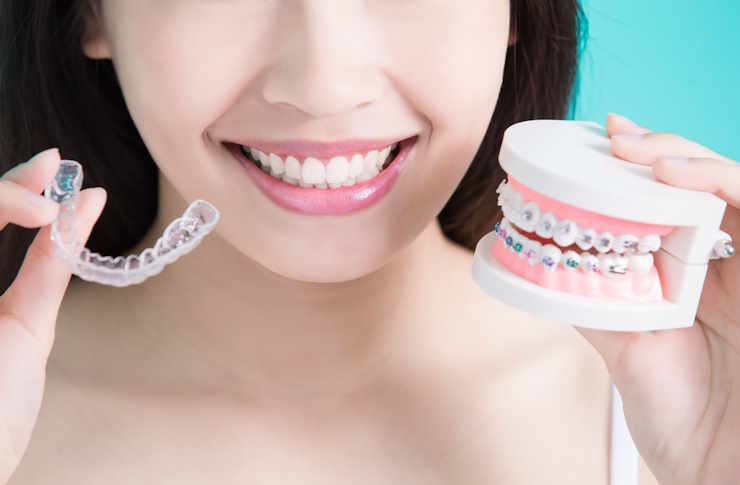Understanding Teeth Care: Repair, Correction, and Enhancement
Maintaining a healthy smile involves more than just brushing and flossing. From addressing common dental problems to exploring corrective treatments and cosmetic enhancements, understanding your options is essential. This guide walks you through the various approaches to teeth care, including repair procedures, orthodontic solutions, and aesthetic improvements that can help you achieve optimal oral health.

Oral health plays a crucial role in overall well-being, yet many people face dental challenges that require professional intervention. Whether you’re dealing with decay, misalignment, discoloration, or infection, modern dentistry offers a range of solutions tailored to different needs. Understanding these options empowers you to make informed decisions about your dental care and work effectively with your healthcare provider to maintain a healthy, functional smile.
This article is for informational purposes only and should not be considered medical advice. Please consult a qualified healthcare professional for personalized guidance and treatment.
What Are Common Dental Issues That May Require Fixing?
Several dental problems can affect individuals at any age, often necessitating professional treatment. Cavities, caused by bacterial decay, are among the most frequent issues and can lead to pain, infection, and tooth loss if left untreated. Gum disease, ranging from mild gingivitis to severe periodontitis, affects the tissues supporting teeth and may result in inflammation, bleeding, and eventual tooth mobility. Cracked or chipped teeth, whether from trauma or wear, can compromise tooth structure and require restoration. Tooth sensitivity, often resulting from enamel erosion or receding gums, can make eating and drinking uncomfortable. Additionally, missing teeth can impact both function and aesthetics, leading many to seek replacement options. Early detection and timely intervention are key to preventing these issues from escalating into more serious conditions that require extensive treatment.
What Are the Types of Braces for Correcting Teeth?
Orthodontic treatment has evolved significantly, offering various options for correcting misaligned teeth and bite issues. Traditional metal braces remain a reliable and cost-effective choice, using brackets and wires to gradually shift teeth into proper position. Ceramic braces function similarly but use tooth-colored or clear materials, making them less noticeable while maintaining effectiveness. Lingual braces are placed on the back surface of teeth, providing an invisible solution for those concerned about appearance. Self-ligating braces eliminate the need for elastic bands, potentially reducing treatment time and discomfort. Each type has specific advantages depending on the severity of misalignment, patient age, lifestyle considerations, and budget. Consultation with an orthodontist helps determine the most appropriate option based on individual needs and treatment goals.
How Do Clear Aligners and Their Uses Compare?
Clear aligners have gained popularity as a discreet alternative to traditional braces, particularly among adults seeking orthodontic correction. These custom-made, removable trays are crafted from transparent plastic and gradually move teeth through a series of incremental adjustments. Clear aligners work best for mild to moderate alignment issues, including crowding, spacing, and certain bite problems. Their removability allows for easier oral hygiene maintenance and no dietary restrictions, unlike fixed braces. Treatment typically involves wearing each set of aligners for one to two weeks before progressing to the next stage. However, success depends heavily on patient compliance, as aligners must be worn 20 to 22 hours daily. Clear aligners may not be suitable for complex orthodontic cases requiring significant tooth movement or jaw repositioning, making professional assessment essential before beginning treatment.
What Is Root Canal Therapy and Its Role in Dental Repair?
Root canal therapy is a procedure designed to save teeth that have become infected or severely damaged, preserving natural tooth structure rather than resorting to extraction. The treatment becomes necessary when the pulp, the soft tissue inside the tooth containing nerves and blood vessels, becomes inflamed or infected due to deep decay, repeated dental procedures, or trauma. During the procedure, the dentist or endodontist removes the damaged pulp, cleans and disinfects the root canal system, and seals it to prevent further infection. Contrary to common misconceptions, modern root canal therapy is relatively comfortable due to advanced anesthesia and techniques. Following treatment, the tooth typically requires a crown to restore strength and function. Root canal therapy has a high success rate and can allow a treated tooth to last a lifetime with proper care, making it a valuable option for dental preservation.
What Are Teeth Whitening and Stain Removal Options?
Teeth discoloration can result from various factors, including diet, tobacco use, aging, and certain medications, leading many to seek whitening solutions. Professional in-office whitening treatments use high-concentration bleaching agents activated by special lights or lasers, delivering dramatic results in a single visit. Take-home whitening kits provided by dentists offer custom-fitted trays and professional-grade bleaching gel for gradual whitening over several weeks. Over-the-counter products, including whitening strips, gels, and toothpastes, provide more affordable but typically less effective options. For intrinsic stains that don’t respond to bleaching, cosmetic solutions like veneers or bonding may be recommended. It’s important to note that whitening treatments work best on natural teeth and don’t affect crowns, fillings, or veneers. Consulting with a dental professional helps identify the underlying cause of discoloration and determine the most appropriate whitening approach for your specific situation.
Conclusion
Maintaining optimal oral health requires understanding the range of dental treatments available for repair, correction, and enhancement. From addressing common issues like cavities and gum disease to exploring orthodontic solutions and cosmetic improvements, modern dentistry provides numerous options tailored to individual needs. Whether you’re considering braces, clear aligners, root canal therapy, or whitening treatments, working closely with qualified dental professionals ensures you receive appropriate care based on accurate diagnosis and evidence-based approaches. Regular dental check-ups, combined with good oral hygiene practices, remain the foundation of preventive care and help minimize the need for extensive interventions. By staying informed about your options and maintaining open communication with your dental care team, you can make confident decisions that support long-term oral health and a smile you feel good about.




